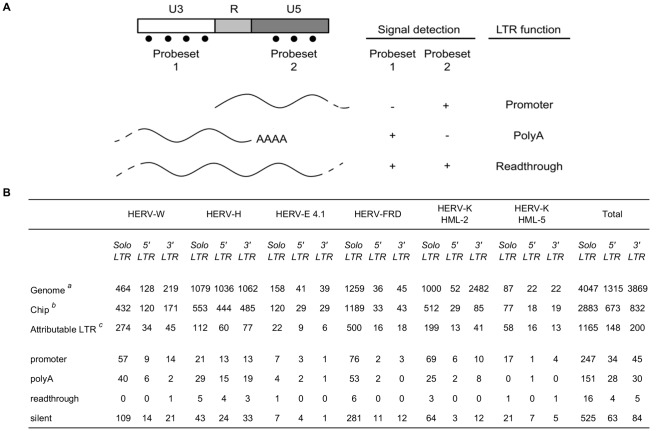Figure 3. LTR functions.
(A) Schematic view of LTR structure and associated theoretical transcription events. Top to bottom: the LTR is a natural or alternative promoter when the transcription starts between U3 and R/U5; the LTR ends an upstream transcription event by the addition of polyA tail at the end of the R region; the transcription passes through the LTR with no incidence in the progression of the polymerase, which results in the detection of U3, R and U5 transcripts. Rules for function assignment are promoter: U3−/U5+; polyA: U3+/U5-; readthrough: U3+/U5+ and silent: U3−/U5-; with expression levels: + >100; - <50. Expression levels between 50 and 100 delineate an indeterminate grey area where a function is assigned if the ratio between U3 and U5 is greater than 4 (for instance U3 = 80 and U5 = 321 is counted as promoter). Otherwise, the LTR function is declared to be unknown. (B) Assignment of functions. a,b,c Loss of information from HERV database to understandable functions. a Summary of Table 1a b Summary of Table 1b c Enumeration of LTRs whose function is attributable, i.e. defined as LTR combining both complete structure on the genome and existing probesets on the chip, that can ultimately allow a discrimination between U3 and U5 expression signals.

